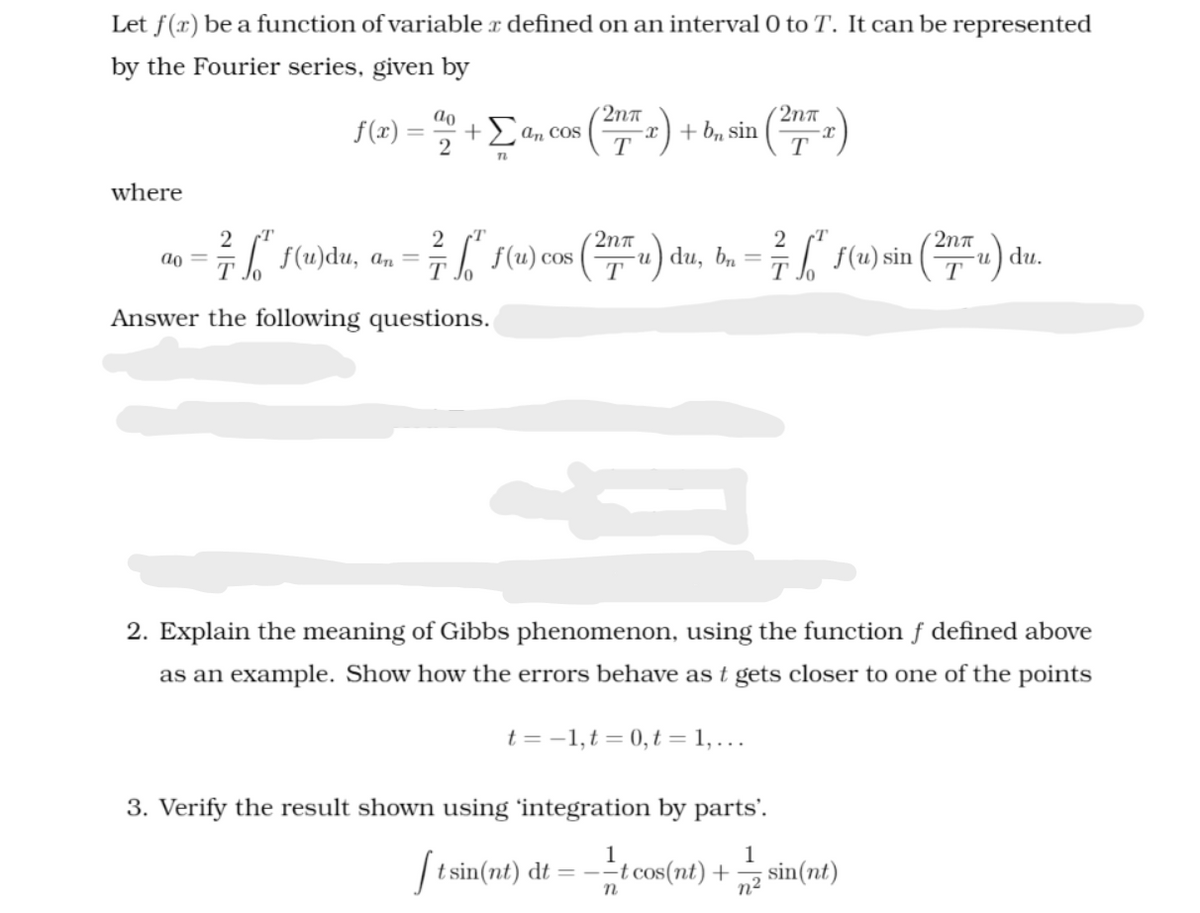Algebra & Trigonometry with Analytic Geometry
13th Edition
ISBN:9781133382119
Author:Swokowski
Publisher:Swokowski
Chapter3: Functions And Graphs
Section3.2: Graphs Of Equations
Problem 78E
Related questions
Question
Please answer the question with explanation..i'll give you multiple upvote.

Transcribed Image Text:Let f(x) be a function of variable x defined on an interval 0 to T. It can be represented
by the Fourier series, given by
{(2) = +Ean
2nn
(2nt
+> an cos
T *) + b, sin
T
where
2nt
2na
f(u)du, an
( r(u) cos (u) du, b.
-и) du, bn
T
I f(u) sin
ao =
-u) du.
Answer the following questions.
2. Explain the meaning of Gibbs phenomenon, using the function ƒ defined above
as an example. Show how the errors behave as t gets closer to one of the points
t = -1,t= 0, t = 1, ..
3. Verify the result shown using 'integration by parts'.
1
1
| t sin(nt) dt = --
t cos(nt) +
sin(nt)
n2
n
Expert Solution
This question has been solved!
Explore an expertly crafted, step-by-step solution for a thorough understanding of key concepts.
Step by step
Solved in 2 steps with 2 images

Recommended textbooks for you

Algebra & Trigonometry with Analytic Geometry
Algebra
ISBN:
9781133382119
Author:
Swokowski
Publisher:
Cengage

Algebra & Trigonometry with Analytic Geometry
Algebra
ISBN:
9781133382119
Author:
Swokowski
Publisher:
Cengage